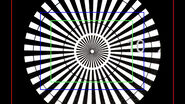Digital microscopes were originally designed for industrial quality control applications. With images transferred directly onto a screen or PC monitor, digital microscopy transforms the microscopy workstation to a PC workplace. Digital microscopy has applications in inspection, documentation, and analysis.
The fields of applications for digital microscopes have become more numerous since their introduction. Even life science applications like documentation in botany, entomology studies and crop science, or the digitalization of museum collections can be performed with digital microscopes. Depending on the specimen and research task, scientists in these fields benefit from microscopes that are flexible in their setup, and yield images of good quality while operating them is easy even if a user does not have microscopy knowledge.
Larger specimen such as butterflies or bugs require a large working distance if they shall be imaged as a whole. Many digital microscopes offer this working distance. The tilting function of some instruments is practical as images can be taken from the sides as well while there is no need to re-pin the insects. Users also feel digital microscopes are a handy tool to collect data and evidence of experimental findings when studying plant life, fungi, algae, and their environments, since they immediately see the image on screen.
The image gallery below shows different examples from entomology, botany, marine biology, and crop science. These images were captured with a Leica DVM6 digital microscope.
























